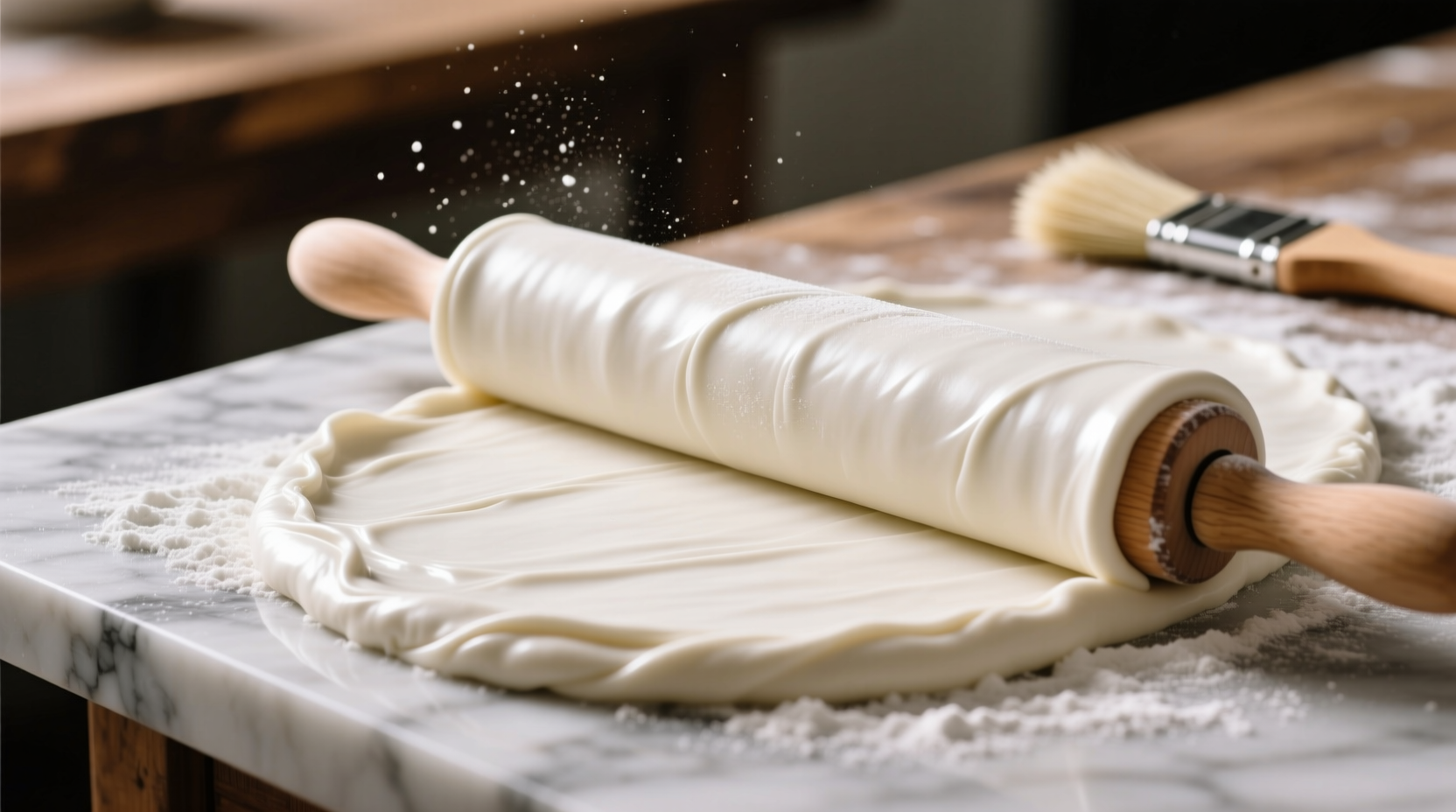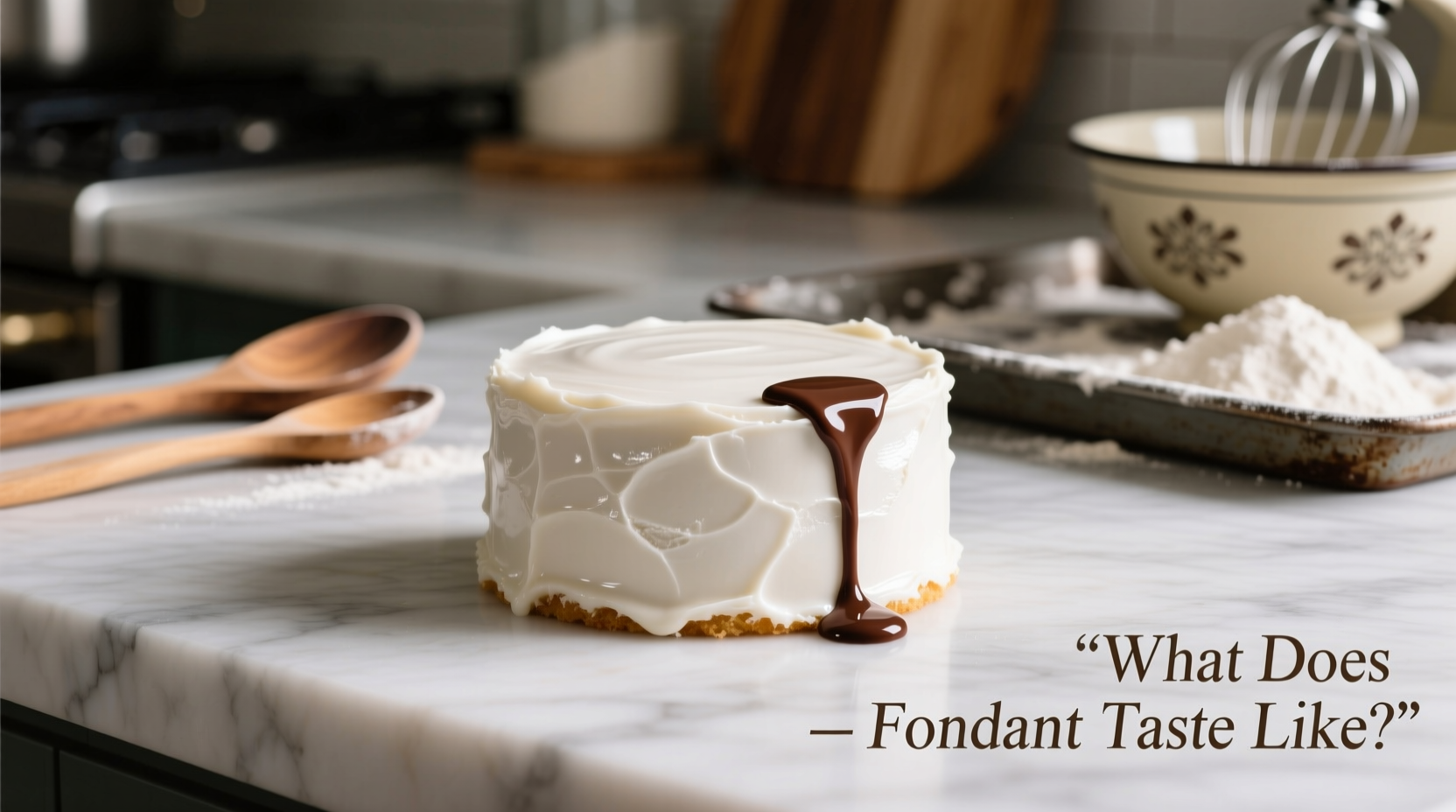When you bite into fondant, you're primarily experiencing concentrated sweetness from its high sugar content (typically 70-80% sugar). The texture is smooth and pliable, almost like thick marshmallow cream, but without the airiness. Unlike buttercream, fondant lacks dairy richness, giving it a cleaner, more straightforward sugary profile that some describe as "candy-like" or similar to gourmet marshmallows.
Breaking Down Fondant's Flavor Profile
Fondant's taste comes from its surprisingly simple composition. Traditional rolled fondant contains just four core ingredients: powdered sugar, water, gelatin (or glycerin), and flavoring. This minimalist recipe creates a flavor experience dominated by pure sweetness with subtle supporting notes:
- Sweetness intensity: Significantly sweeter than buttercream due to higher sugar concentration
- Base flavor: Clean sugar taste without caramelization notes
- Secondary notes: Most recipes include vanilla, but citrus, almond, or floral extracts can create distinctive variations
- Mouthfeel: Smooth, slightly elastic texture that melts gradually
According to the USDA FoodData Central database, commercial fondant contains approximately 75% carbohydrates (primarily sucrose), explaining its intense sweetness. The remaining components include small amounts of water, gelatin, and flavorings that influence the overall taste experience.
Fondant vs. Other Cake Icings: A Taste Comparison
| Icing Type | Sweetness Level | Flavor Profile | Texture | Best For |
|---|---|---|---|---|
| Rolled Fondant | Very High | Clean sugar, subtle vanilla | Smooth, elastic, slightly chewy | Intricate decorations, smooth finishes |
| Buttercream | Moderate-High | Rich dairy, buttery notes | Creamy, spreadable | Flavor-focused cakes, piping details |
| Ganache | Moderate | Deep chocolate, creamy | Smooth, firm when chilled | Chocolate cakes, drip effects |
| Whipped Cream | Low-Moderate | Fresh dairy, light sweetness | Airy, delicate | Fresh fruit cakes, light desserts |
Why Commercial Fondant Tastes Different Than Homemade
Most people's negative impressions of fondant come from store-bought varieties that prioritize shelf stability over taste. Commercial fondant often contains:
- Hydrogenated oils for pliability
- Preservatives like potassium sorbate
- Artificial flavorings
- Higher sugar concentrations (up to 85%)
These additives create that characteristic "plastic" aftertaste many associate with fondant. In contrast, professional bakers using homemade marshmallow-based or traditional sugar-based recipes achieve a more delicate flavor. The Baking Business Journal notes that controlling sugar crystallization through precise temperature management significantly improves fondant's mouthfeel and flavor release.

When Fondant's Taste Works Best
Fondant's pure sweetness actually shines in specific applications where other icings would overwhelm delicate flavors:
- Fruit-forward cakes: The clean sugar profile complements rather than competes with fresh fruit fillings
- Chocolate cakes: Creates a pleasing contrast with dark chocolate's bitterness
- Intricate designs: When visual presentation matters more than icing flavor
- Outdoor events: Maintains structure better than buttercream in warm temperatures
Many professional cake designers use a "best of both worlds" approach—applying a thin layer of buttercream beneath fondant. This provides the structural benefits of fondant with the improved flavor of buttercream. As noted in Cake Decorators Association resources, this technique has become standard practice among award-winning cake artists.
Improving Fondant's Taste Experience
If you're concerned about fondant's sweetness, these professional techniques can enhance the eating experience:
- Flavor infusion: Add citrus zest, floral waters, or high-quality extracts to the recipe
- Thickness control: Roll fondant as thin as possible (1/8 inch or less) to reduce sugar dominance
- Flavor pairing: Match fondant flavors with complementary cake elements (e.g., lemon fondant with raspberry filling)
- Temperature management: Serve cakes at cool room temperature to moderate sweetness perception
A 2023 survey of professional pastry chefs published in Pastry Scoop Research found that 78% modify commercial fondant with additional flavorings and texture adjustments to improve taste. The most successful modifications involved incorporating small amounts of cream cheese or mascarpone into the fondant base for a more complex flavor profile.
Common Fondant Misconceptions
Several myths persist about fondant's taste that deserve clarification:
- "All fondant tastes like plastic": This applies mainly to low-quality commercial products; artisanal fondant has a much more refined flavor
- "Fondant is just for decoration": While often used decoratively, high-quality fondant is absolutely meant to be eaten
- "Fondant has no flavor variation": Professional bakers create countless flavor variations using natural extracts and infusions
- "Homemade fondant is always better": Some commercial brands (like Satin Ice) have improved significantly and offer reliable, consistent flavor
Practical Tips for Fondant Newcomers
If you're trying fondant for the first time or serving it to others, consider these practical suggestions:
- Start with small samples to adjust to the texture and sweetness
- Pair with strongly flavored cakes that can stand up to fondant's sweetness
- Choose flavored varieties (chocolate, citrus) if pure sweetness concerns you
- Store fondant-covered cakes properly to prevent drying and flavor degradation
- Communicate with your baker about taste preferences—they can customize recipes
Remember that fondant's role in cake design extends beyond flavor—it provides the perfect canvas for intricate decorations that would be impossible with softer icings. When chosen and applied thoughtfully, fondant can enhance both the visual appeal and eating experience of your cake.











 浙公网安备
33010002000092号
浙公网安备
33010002000092号 浙B2-20120091-4
浙B2-20120091-4